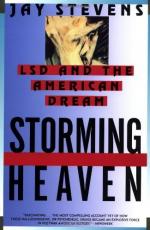|
This section contains 6,366 words (approx. 22 pages at 300 words per page) |

|
OFFICIAL NAMES: LSD (lysergic acid diethylamide), LSD25
STREET NAMES: Acid, zen, sugar, tabs, blotter, cid, doses, trips, boomers, lightning flash, hawk, cheer, liquid acid, L, microdot, dot, paper mushrooms, tab, hits, tripper, yellow sunshines, rainbows, smilies, stars, strawberries
DRUG CLASSIFICATIONS: Schedule I, hallucinogen
Overview
Lysergic acid diethylamide, or LSD, is the most potent and widely used of the category of drugs known as hallucinogenics. Hallucinogenic drugs, also called psychedelics, distort and confuse the senses, making people see, hear, feel, smell, or taste things that are not really there. The word hallucinate comes from a Latin word meaning "to wander in the mind." LSD falls into the category of hallucinogenic drugs called indole hallucinogens. This means it is derived from ergot, which is a fungus that grows on grains, particularly rye.
With respect to its hallucinogenic properties, LSD affects vision most strongly, although it can...
|
This section contains 6,366 words (approx. 22 pages at 300 words per page) |

|



